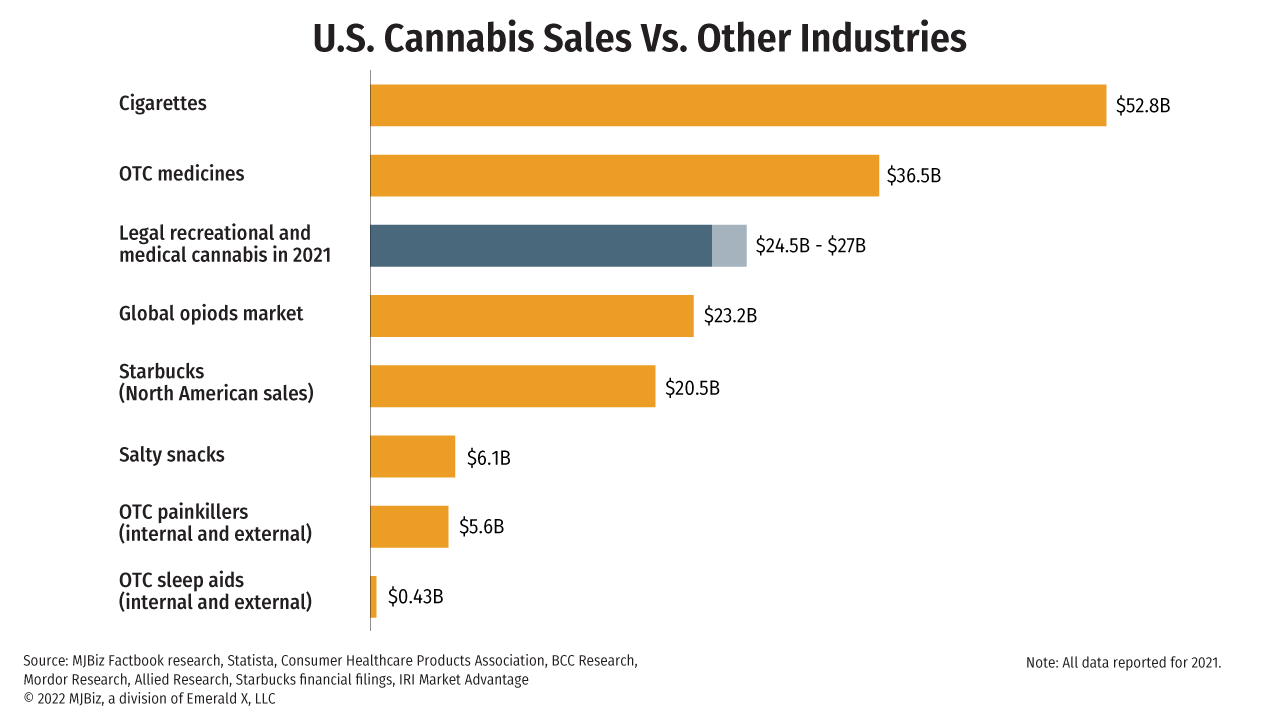By Jenel Stelton-Holtmeier
May 4, 2022 – Updated May 4, 2022 Licensed marijuana sales in 2021 eclipsed coffee giant Starbucks

For years, there has been a running joke in pop culture about a Starbucks on every corner.
But that trope might need updating now that regulated cannabis sales in the United States have outstripped the coffee giant’s North American sales by at least a third, according to the 2022 MJBiz Factbook.
And that’s despite the fact that coffee can be sold in all 50 states. By contrast, only 39 states and the District of Columbia have legalized some form of marijuana. Licensed marijuana sales in 2021 eclipsed coffee giant Starbucks
Even the pace of growth from 2020 to 2021 landed in cannabis’ favor.
Starbuck’s annual revenue in North America grew 25% during the company’s 2021 fiscal year.
By comparison, the cannabis industry saw sales climb 30% last year.
People consume cannabis for many reasons, from aiding sleep to just having fun.
And during 2021, sales likely received a boost as people turned to the plant for a variety of uses.
According to the Consumer Healthcare Products Association, sales of over-the-counter sleep aids – one of the most commonly cited uses for cannabis – increased less than 1% in 2021.
Sales of OTC pain relievers, another common cannabis use, grew 5%.
Cannabis sales, both medical and adult use, grew roughly 30% in the same period.
That 30% jump is unlikely to have been all medically driven, however.
During the pandemic, consumers also embraced vices that had previously been in decline.
For example, unit sales of cigarettes increased in 2021 for the first time in 20 years, according to data provider Statista.
Separately, current estimates place the legal marijuana market in the U.S. at slightly larger than the global opioids market, a good sign for those concerned about opioid use.
That said, there’s no way to definitively determine the direct impact of cannabis legalization on opioid use.
Outlets that track sales of opioids through legal channels noted that sales growth slowed during the COVID-19 pandemic, likely because of more limited access to hospitals.

